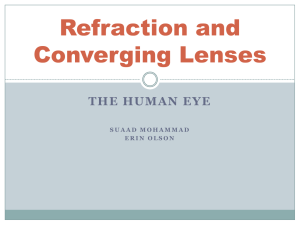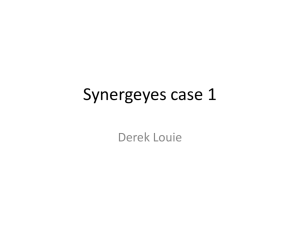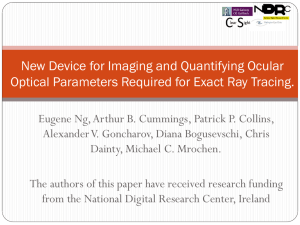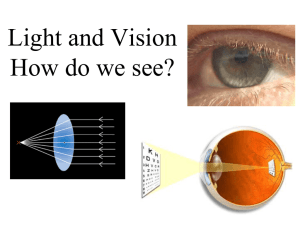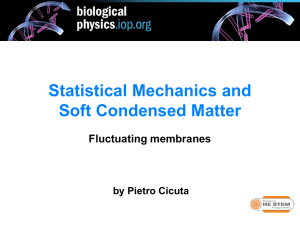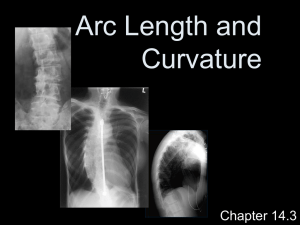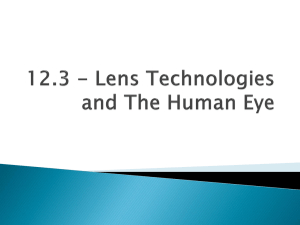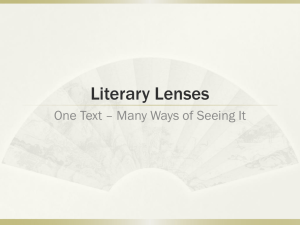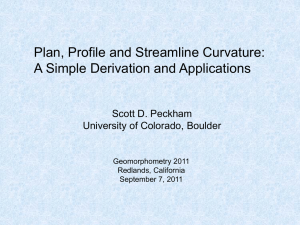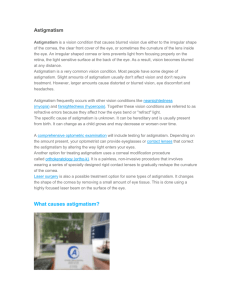4-Contact-lenses - MM Joshi Eye Institute
advertisement
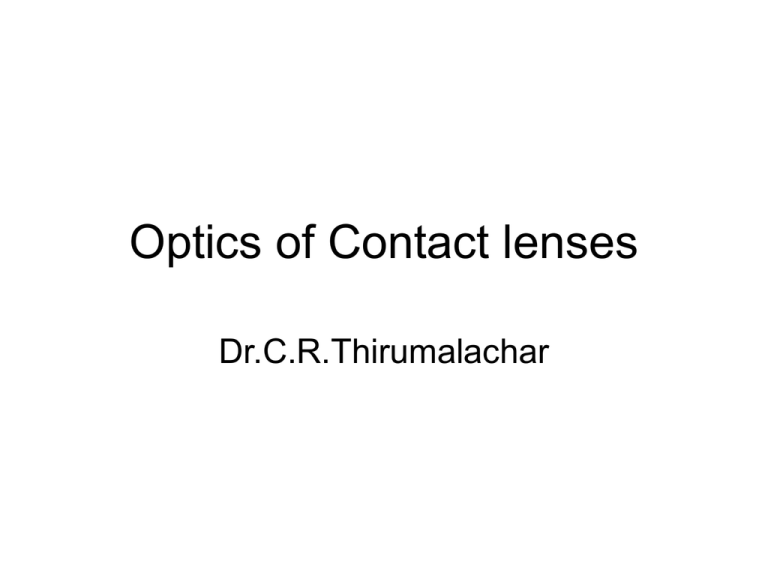
Optics of Contact lenses Dr.C.R.Thirumalachar Introduction • Major refraction of eye occurs at AIR/CORNEA INTERFACE. • Spectacle lenses- most common method of correcting ref. errors • Disadv of spectacles- too many, though advantages are considerable • Development of contact lenses – quest for better looks and better vision • • • • Idea of contact lenses- Leonardo Da Vinci Herschel & Fick evolved its practical use Blown, Ground, moulded lenses Lathe cutting, injection moulding & spin moulding • Evolved better materials , polymer chemistry –Hard, soft, semisoft & gas permeable . Optics • Contact lens placed in contact with cornea with a thin fluid film in between • It eliminates cornea as ref. surface • Afocal contact lens: – ant & post curvatures of CL same as cornea – No optical power – Surface irregularities of cornea are taken care of • Fluid lens – Curvature of posterior surface of CL derives the power of CL • Glass lens – Post surface of CL same curvature as cornea – CL power derived by curvature of ant surface of CL • Combined lens – Curvature of both surfaces contribute – Both glass lens & fluid lens give dioptric power. Physical factors of CL 1. Overall diameter of Hard lenses- 8mm, about 1.5-2mm less than corneal diameter • • • GP & soft lenses allow larger diameters Larger lenses are more stable Larger lenses – vaulting effect 2. Optical zone- central zone of 5-6mm • Average of maximum & minimum pupil size 3. Curvatures Ant. Curvatures: • • • C.A.C (Cental ant.Curvature)- ant surface of optical zone P.A.C. (Peripheral ant curvature): slope on the periphery of ant surface I.A.C. (Intermediate anterior curvature) for high power plus & minus lenses in between CAC & PAC – Posterior curvatures: – CPC (central post curve )– Base curve to fit the front surface of cornea – I.P.C.(Intermediate)- flatter than CPC – P.P.C.(Peripheral)- flatter than IPC These are meant to serve as tear fluid reservoir. These form ski for contact lens movement. CL can have bicurve, tricurve or even multi curve contour design. 4. Blend Smooth area of transition of radius of curvature from one curve to other 5. Edge-Polished & blended union of ant & post surfaces • Too sharp- may dig into corneal epithelium • • Too thick- may irritate the lids Edge lift or Z factor- comfort & stability • Power of CL determined by central ant & post surfaces at O.Z. determined by the ammetropic correction required • Tint- to reduce the glare for cosmesis • Ref. error determined by retinoscopy • Curvature determined by keratometry • Fit can be assessed by fluorescein pattern- flat , steep, ideal • Special situations – Keratoconus, Aphakia, Pseudophakia, Post keratoplasty Thank you
